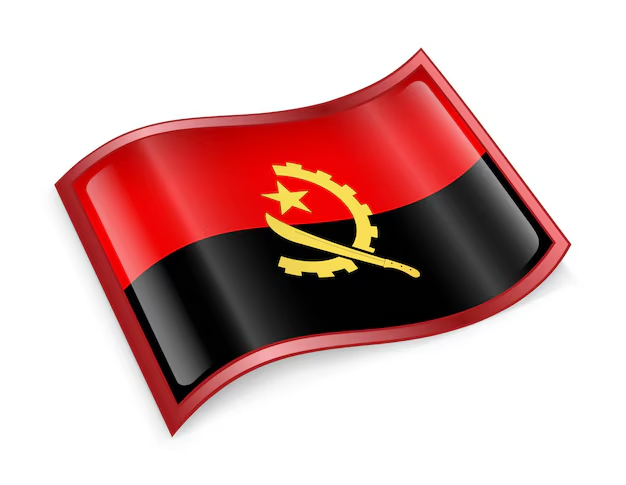As of 2025, Angola’s public debt has risen sharply to 57.4 trillion kwanzas (approximately 58.61 billion U.S. dollars), accounting for 63% of the country’s Gross Domestic Product (GDP).
While the government continues to implement debt management strategies, accusations of loan defaults have emerged, intensifying concerns about Angola’s financial credibility and stability.
Current Debt Landscape
Angolan Finance Minister Vera Daves de Sousa recently outlined the 2025 Annual Debt Plan (PAE), projecting public debt service costs at 13.2 trillion kwanzas (about 13.53 billion U.S. dollars), with expected revenues reaching 14.6 trillion kwanzas (about 14.93 billion U.S. dollars).
Despite these financial projections, Angola’s debt servicing remains burdensome, averaging 16 billion U.S. dollars annually over the past three years. China continues to be Angola’s largest creditor, holding approximately 40% of its total external debt.
However, Angola’s ability to honor its debt commitments has been called into question following accusations of loan defaults.
Recently, liquidators from the European arm of VTB Bank alleged that Angola had defaulted on a loan after international sanctions affected the Russian parent company. This accusation has amplified concerns over Angola’s creditworthiness and transparency, potentially complicating future access to international financing.
Economic Context and Debt Sustainability
Angola’s economy remains heavily reliant on oil, which accounts for nearly 29% of GDP and about 95% of export revenues. This dependence makes the country vulnerable to fluctuations in global oil prices.
In 2023, GDP growth slowed to just 0.9% due to declining oil production and a weakening currency, which further exacerbated debt burdens. By the end of 2023, the public debt-to-GDP ratio surged to approximately 84%, reflecting external financial pressures.
The recent depreciation of the kwanza has worsened Angola’s debt outlook, particularly as a significant portion of its liabilities are denominated in foreign currencies.
While an early 2024 rebound in oil prices provided some relief, persistent debt servicing obligations continue to strain public finances, raising doubts about the sustainability of Angola’s economic recovery.
Loan Default Accusations: A Growing Concern
The allegations of loan defaults have cast a shadow over Angola’s financial standing. The dispute with VTB Bank revolves around a syndicated loan linked to an undisclosed project, raising questions about Angola’s fiscal transparency.
International creditors are increasingly scrutinizing the country’s ability to meet its obligations, fearing a domino effect that could impact Angola’s access to future financing.
Additionally, Angola’s heavy reliance on Chinese loans has introduced another layer of complexity. The country had benefited from a three-year debt relief agreement with China, which expired in 2023.
As a result, Angola has been forced to resume full interest payments, in some cases drawing from escrow accounts held by Chinese lenders. The financial strain of these repayments further underscores the challenges Angola faces in balancing debt sustainability with economic growth.
Government Strategies for Debt Management
Despite these challenges, the Angolan government has taken steps to improve debt management.
Finance Minister Vera Daves de Sousa has emphasized a strategic approach to public debt, reducing Eurobond obligations from 1.5 billion to 864 million U.S. dollars in 2024. This reflects a commitment to restructuring debt in a manner that minimizes financial risk.
To enhance resilience against external shocks, Angola has also adopted a decentralized model for domestic debt management.
Efforts to reduce financing costs have yielded some positive results, with the debt service-to-total income ratio declining from 279% in 2022 to 100% in 2023. However, the persistence of external debt challenges remains a significant obstacle to long-term economic stability.
Future Outlook: Managing Risk Amidst Financial Scrutiny
Several factors will shape Angola’s debt trajectory moving forward:
- Oil Dependency: Angola’s fiscal stability remains closely tied to global oil price fluctuations. A sustained decline in prices could further strain public finances, increasing default risks.
- Debt Servicing Costs: Angola is expected to face external amortizations of approximately 6.2 billion U.S. dollars in 2025, placing continued pressure on budgetary resources.
- Inflation and Interest Rates: Inflation is projected to peak at 18.1% in 2024, potentially increasing borrowing costs and limiting economic growth.
- International Scrutiny: The ongoing default allegations and concerns over financial transparency may hinder Angola’s ability to secure favorable lending terms in the future.
Conclusion
Angola’s public debt situation in 2025 presents a complex and challenging scenario. While the government remains committed to strategic debt management, accusations of loan defaults threaten to undermine its financial credibility.
The country’s economic future hinges on maintaining transparency, improving fiscal discipline, and reducing dependency on oil revenues.
As Angola navigates these financial uncertainties, addressing the concerns of international creditors and implementing sustainable debt policies will be critical to ensuring long-term economic stability.
Failure to manage these risks effectively could result in further credit downgrades and reduced investor confidence, placing additional strain on the nation’s economic outlook.
Also Read

